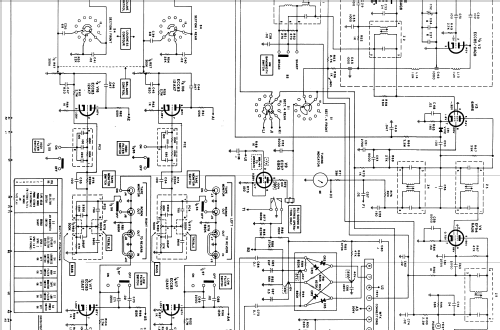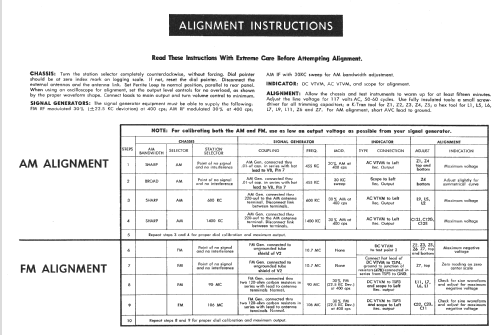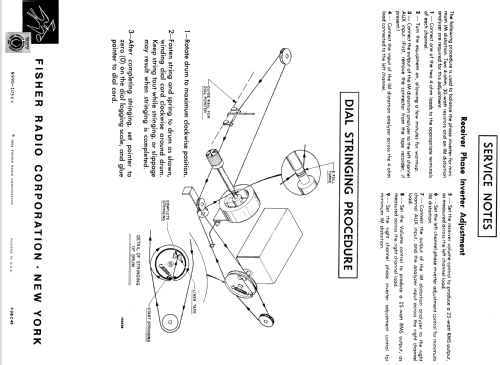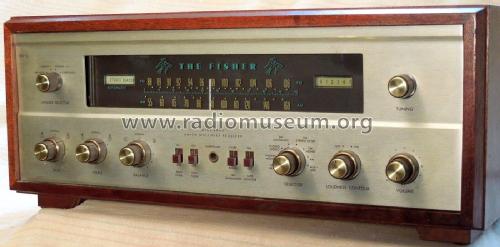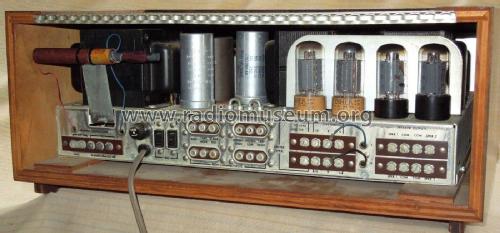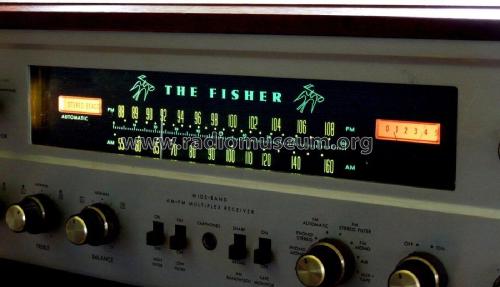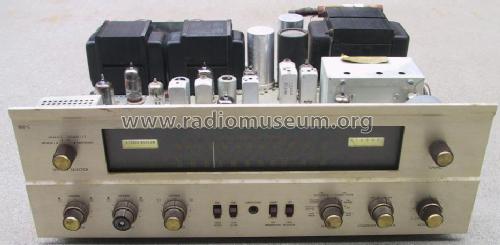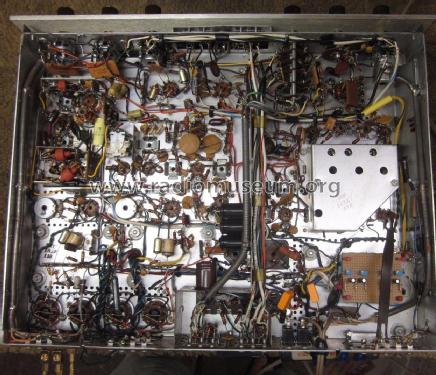- País
- Estados Unidos
- Fabricante / Marca
- Fisher Radio; New York (NY)
- Año
- 1963–1968
- Categoría
- Radio - o Sintonizador pasado WW2
- Radiomuseum.org ID
- 26710
Haga clic en la miniatura esquemática para solicitarlo como documento gratuito.
- Numero de valvulas
- 22
- Válvulas
- EC97 ECC85 6HR6 EF94 EF94 EF94 EF93 EK90 EC97 ECC83 ECC83 ECC83 ECC83 ECC83 7591 7591 7591 7591
- Principio principal
- Superheterodino con paso previo de RF; ZF/IF 455/10700 kHz
- Número de circuitos sintonía
- 7 Circuíto(s) AM 13 Circuíto(s) FM
- Gama de ondas
- OM y FM
- Tensión de funcionamiento
- Red: Corriente alterna (CA, Inglés = AC) / 220 Volt
- Altavoz
- - Este modelo usa altavoz exterior (1 o más).
- Potencia de salida
- 60 W (75 W max.)
- Material
- Metálico
- de Radiomuseum.org
- Modelo: 800C - Fisher Radio; New York NY
- Forma
- Chasis (tambien de autoradio)
- Ancho, altura, profundidad
- 445 x 146 x 380 mm / 17.5 x 5.7 x 15 inch
- Anotaciones
- HiFi-Stereo-Tuner-Verstärker. Ausgangsleistung 2× 33 W (Sinus); Nußbaum-Gehäuse gegen Mehrpreis (120,- DM).
Vertrieb über ELAC. 4 ZF+3 Begrenzerstufen. Frequenzbereich: 20...20.000 Hz +/- 1 db. Brumm und Rauschen -85 db
- Peso neto
- 17 kg / 37 lb 7.1 oz (37.445 lb)
- Precio durante el primer año
- 2,760.00 DM
- Ext. procedencia de los datos
- erb
- Procedencia de los datos
- Handbuch VDRG 1966/1967
- Otros modelos
-
Donde encontrará 592 modelos, 505 con imágenes y 204 con esquemas.
Ir al listado general de Fisher Radio; New York (NY)
Contribuciones en el Foro acerca de este modelo: Fisher Radio; New: 800C
Hilos: 1 | Mensajes: 1
The Fisher 800C is one of the best all-tube broadcast receivers I have ever owned. It is exceptionally sensitive with excellent selectivity and stereo performance. As such, this radio is my all-time favorite broadcast tube receiver. It's expensive on the collector market but it is worth it.
Fisher launched this 800C over their 500C for those customers who also demanded AM broadcast coverage. Which it does very well given the presence of an RF amplifier (EF93) before the mixer in the AM chain. The only thing I would have liked is the use of an EM84 tuning indicator instead of the moving coil meter that was used, but that is a matter of opinion.
The radio differs from its contemporary US or Japanese broadcast receivers of the time. When looking at the bottom of the chassis, one will see many European components are used, as well as typical European construction techniques. I do not know where the design was done but there must have been a strong European influence because to me, the insides appear much more like European broadcast radios than American radios of the time.
The diagrams on this site I scanned from the original Fisher service manual which I bought on eBay but I make it avaialbe to you for free. I scanned the manual in it's entirely in high resolution and as continuous diagrams. Unfortunately a scan like this requires too much server space. If you want a copy of the original scan, please email me at fisher800c[A*T]gmail.com
Loek d'Hont, 18.Jun.09

